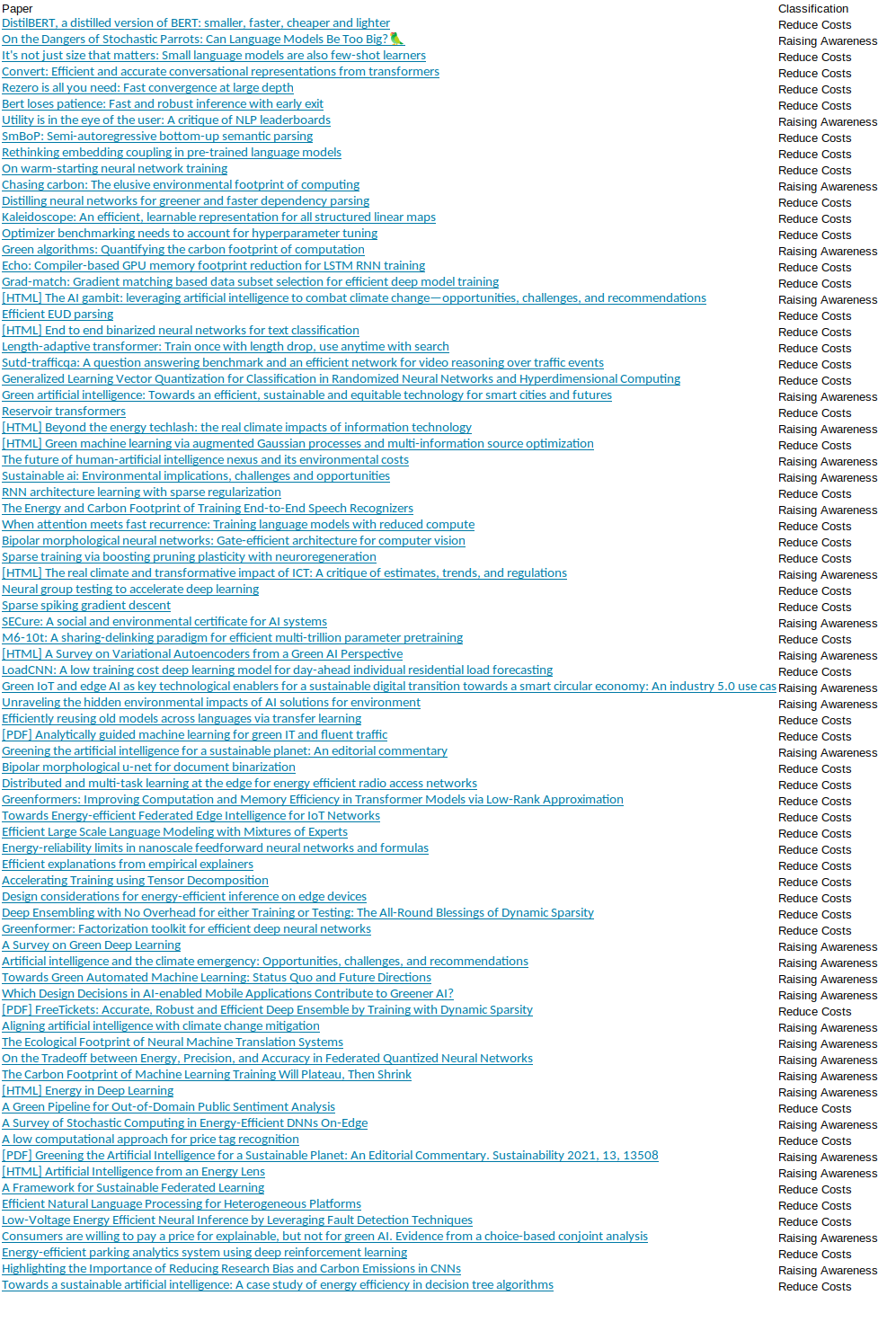Modeling AI systems' characteristics of energy consumption and their sustainability level as an extension of the FAIR data principles has been considered only rudimentarily. Here, we propose an ontology for modeling the energy consumption and other environmental aspects of AI models. The ontology can be used in various scenarios, ranging from comprehensive research data management to strategic controlling of institutions and environmental efforts in politics.
Our ontology (OWL file) is available at https://w3id.org/Green-AI-Ontology/ontology
For an overview of the ontology see our ISWC2022 Poster.
The ontology was evaluated based on the competency questions given below. Based on our constructed Green AI Knowledge Graph we are able to answer all competency questions. The corresponding SPARQL queries and obtained results can be found in the section SPARQL Queries.
If you want to contribute to extend our knowledge graph, feel free to use our questionnaire: https://forms.office.com/r/HYd4R9jutX
Main classes and properties of the Green AI Ontology (click to enlarge):
- Q1: How many floating-point operations (FPO) did the AI Model need to be trained?
- Q2: How much kg of CO2eq did the AI Model generate?
- Q3: How long did it take to train the AI Model?
- Q4: How much energy in kWh did the training of the AI model take?
- Q5: What Energy Measurement Services are used to calculate metrics about the AI Model's energy consumption?
- Q6: What energy metrics are used to indicate the energy consumption of an AI Model?
- Q7: How many times was the metric "floating-point operations" (FPO) used to indicate the energy consumption of AI models?
- Q8: What are the hardware settings used for training the AI Model?
- Q9: In which region is the hardware used to train the AI Model? (Background: In a carbon-friendly region?)
- Q10: How many GPUs were used to train the AI Model?
- Q11: Did AI Model A or AI Model B generate more CO2?
- Q12: Which programming language was used to train the AI Model?
- Q13: What software modules were used to train the AI Model?
- Q14: In the context of which research project was the AI Model developed?
- Q15: Which publication does the AI Model have?
Based on our constructed Green AI Knowledge Graph we are able to answer all competency questions listed above. In the following you can find the output of the corresponding SPARQL queries using our Green AI Knowledge Graph stored in Ontotext's GraphDB graph database.
Query #1: Get the number of floating-point operations (FPO) that were needed to train the AI models. Answers Q1.

Query #2: Get several energy metrics (emitted CO2 in kg, run time and energy consumption in kWh) that specify the energy consumption of an AI Model. Answers Q2, Q3 and Q4.

Query #3: Get information about a Energy Measurement Service used. Answers Q5.

Query #4: Get the Energy Measurement Metrics that are used. Answers Q6.

Query #5: Get the total number how often the metric floating-point operations (FPO) is used. Answers Q7.

Query #6: Get information which GPUs and in which number were used to train the AI Model. If available get information where the hardware was located and the corresponding CO2 emission factor of the location. Answers Q8, Q9 and Q10.

Query #7: Compare the amount of emitted CO2 in kg of two AI Models. Answers Q11.

Query #8: Get informations about the programming language and software modules used to train an AI Model. Answers Q12 and Q13.

Query #9: Get several information about the Publications and Research Projects related to the AI Models. Answers Q14 and Q15.

The following papers have been considered for creating the ontology (ranked by decreasing citation count):
Please cite our paper as follows:
@article{Faerber2021gaiontology,
author = {Michael F{\"{a}}rber and
David Lamprecht},
booktitle = {Proceedings of the ISWC 2022 Posters, Demos and Industry Tracks: From Novel Ideas to Industrial Practice co-located with 21st International Semantic Web Conference (ISWC 2022), Ed.: A. Dimou},
title = "{The Green AI Ontology: An Ontology for Modeling the Energy Consumption of AI Models}",
year = {2022}
}

